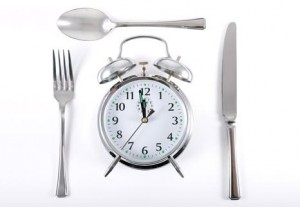Properly Fueling the Body
I will make a safe assumption and say that most people have no idea what food is made of, how digestion works, when to eat, what to eat, why you should or why you shouldn’t; the dynamics of how the broad spectrum of foods are metabolized and used by the body is a complete mystery to average-Joe-citizen of this planet. Allow me to provide you a little of my athletically-biased clarity.

As one of the most athletically minded people on the planet, all of the eating that I do is timed properly between my trainings and has a specific goal for the type of eating that it is. More specifically, every meal and snack I have is coordinated to have a direct effect in relation to the training I do.
There are three types of eating that you can do as an athlete:
- Fuelling the body to have energy throughout the day or for a workout.
- Providing recovery nutrition for your body to rebuild itself after a workout.
- Sweet-tooth savouring and pleasure eating.

As I eat throughout the day, I have developed a very specific discipline to juggle the first two types of eating back and forth around my workouts. There are a few reasons why eating needs to be timed around your exercise schedule:
1. You must eat a carbohydrate-rich serving of food before you engage in exercise of sustained, moderate intensity. Once you eat the meal, you should wait two hours for the food to be properly metabolized into the sugars and glycogen your muscles will burn during the workout. The best kind of carbs for this are slow burring starches and complex carbohydrates that will sustain you longer during your exertion. ( Potatoes, Oatmeal, Cream of Wheat, Pastas, etc.)
2. After a workout you need to eat a protein rich meal to properly fuel the anabolic muscle rebuilding and growth processes that begin 30 mins after your workout is complete. You should also have a moderate helping of carbohydrates ( of any kind, even cake or pastries are fine) along with it to restore your blood sugar to regular levels after being depleted during exercise.
Note:
Eating protein after a workout is absolutely crucial for attaining the net gain during an anabolic muscle rebuilding period. In simpler terms, your body is in a constant state of adaptation. If you do a 40 minute arm workout, when it’s over, your body will begin rebuilding and strengthening your arms in response to the exercise. Where your body gets the protein to do this is up to you. The first place your arms will look for protein is in your stomach through your digestion. If there is none there to take, they will take it from other muscle groups in your body, cannibalizing muscle tissue from your chest, legs or wherever they deem appropriate.
So make sure to eat protein after a workout.
3. Eating should be done more often and in smaller amounts. Six meals a day or eating every 2 to 2 ½ hours is appropriate. As our ancient ancestors evolved, they were grazers and always enjoyed smaller, more frequent repasts. This habit likely came about from the full time job it was being a caveman trying to feed yourself. Never knowing when your next wild boar or wild berry bush was going to come along made you save some of your food for later. Eating this way is key to winding the gears of your metabolic clock properly. Pleasure eating and satisfying of the sweet tooth should only be done every once in a while. All this type of eating does is slow down the function of your well-oiled machine.
Doing steps 1 and 2 may become simple enough after a few weeks of really keeping your eye on the ball with balancing your eating and timing it with your workouts, but number three will appear to be unrealistic to some. Getting in 3 squares a day is hard enough as you have meetings, a long commute to the office, soccer practice for the kids, running errands, trying to have a life…. and you want me to eat six times a day? Are you nuts?
Quite simply, yes I am.
As the shape of our lives has quickly slipped out of the mould that our bodies have been accustomed to for hundreds of thousands of years, we are not simply at liberty to adjust our own physiology to adapt to a different kind of work-based and highly involved, civilized lifestyle that does not accommodate the frequency and types of consumption that should be integrated for optimal health.
Eating should be geared around what I call, the Metabolic Cycle. In a Metabolic cycle, only a certain amount of food can be used by the body for steps 1 and 2 during a given period. After those systems’ fuel tanks are full, the remainder of what you eat is either stored as fat or processed by the kidneys for disposal. Don’t overeat. Look down at a plate of food that will make you “full” and just eat half.
It is the best that we can do to make small, mindful adjustments to our eating habits and types of foods that we eat to become more aligned with the programming inside us that dictates how we properly fuel the body.

